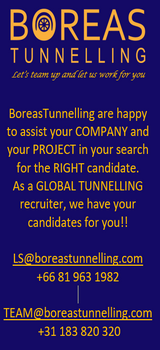Vancouver's Burrard Inlet Rapid Transit Study lists crossing options
Vancouver is to choose between 5 different fixed link options across Burrard Inlet to the North Shore. The good news is 3 of them are tunnel options. A potential bad news is that privately the bridge options are favored (though this might just be the personal conviction of my friend). Below is the news released by the Government of the British Columbia.
Burrard Inlet Rapid Transit Study lists crossing options
The technical feasibility study for a high-capacity rapid transit crossing from Vancouver across the Burrard Inlet to the North Shore is complete, resulting in five potential crossing options.
“Our government is committed to creating greener and more liveable cities and boosting access to transit as much as possible,” said Claire Trevena, Minister of Transportation and Infrastructure. “This study shows possibilities that can be considered in future planning. It’s exciting to look towards a future high-speed connection that will make moving around on the North Shore and Greater Vancouver easier and greener.”
The Burrard Inlet Rapid Transit study will help inform the long-term Transport 2050 planning, led by TransLink and the Mayors’ Council. The study led by Mott MacDonald Canada resulted in five possible routes for future planning consideration:
- Downtown Vancouver to Lonsdale via First Narrows (tunnel crossing)
- Downtown Vancouver to Lonsdale via Brockton Point (tunnel crossing)
- Downtown Vancouver to West Vancouver via Lonsdale (tunnel crossing)
- Downtown Vancouver to Lonsdale via Second Narrows (new bridge crossing)
- Burnaby to Lonsdale via Second Narrows (new bridge crossing)
Connecting Lonsdale City Centre with Vancouver’s metropolitan core and the regional rapid transit network, while considering compatibility with existing and future land use, is one of the recommendations put forward by the Integrated North Shore Transportation Planning Project (INSTPP). That project was led by Bowinn Ma, MLA for North Vancouver, in 2018. Work on the remaining recommendations of INSTPP continues through NXSTPP (Next Step), a working group that includes all levels of government on the North Shore. The group works in partnership to improve mobility both in and around the region.
“People living in North Vancouver are eager to embrace socially, environmentally responsible ways to travel that allow them to beat the traffic,” Ma said. “This exciting technical feasibility study is the first-ever co-ordinated effort by the Province in partnership with Indigenous governments, municipalities and TransLink to identify a potential rapid transit solution across the Burrard Inlet for people who live, work and travel throughout Metro Vancouver.”
The Ministry of Transportation and Infrastructure, the districts of North Vancouver and West Vancouver and the cities of Vancouver and North Vancouver contributed joint funding towards the study. TransLink oversaw the technical work.
Making investments to improve transit is part of the B.C. government’s CleanBC plan. Initiatives in the CleanBC plan aim to make transit a more accessible and efficient option for all British Columbians, reducing congestion and carbon pollution. CleanBC is a pathway to a more prosperous, balanced and sustainable future. It was developed in collaboration with the BC Green Party caucus and Andrew Weaver, MLA for Oak Bay-Gordon Head, and supports the commitment in the Confidence and Supply Agreement to implement climate action to meet B.C.'s emission targets.
Learn More:
Burrard Inlet Rapid Transit Study: http://news.gov.bc.ca/files/9-15_Burrard_Inlet_study.pdf
CleanBC: https://cleanbc.gov.bc.ca/
cover tunnel photo by: Matt Brown from London, England / CC BY
Copyright 2019-2024 TunnelContact.com









Source: https://news.gov.bc.ca/releases/2020TRAN0144-001729
Burrard Inlet Rapid Transit Study lists crossing options
news.gov.bc.caThe technical feasibility study for a high-capacity rapid transit crossing from Vancouver across the Burrard Inlet to the North Shore is complete, resulting in five potential crossing options.